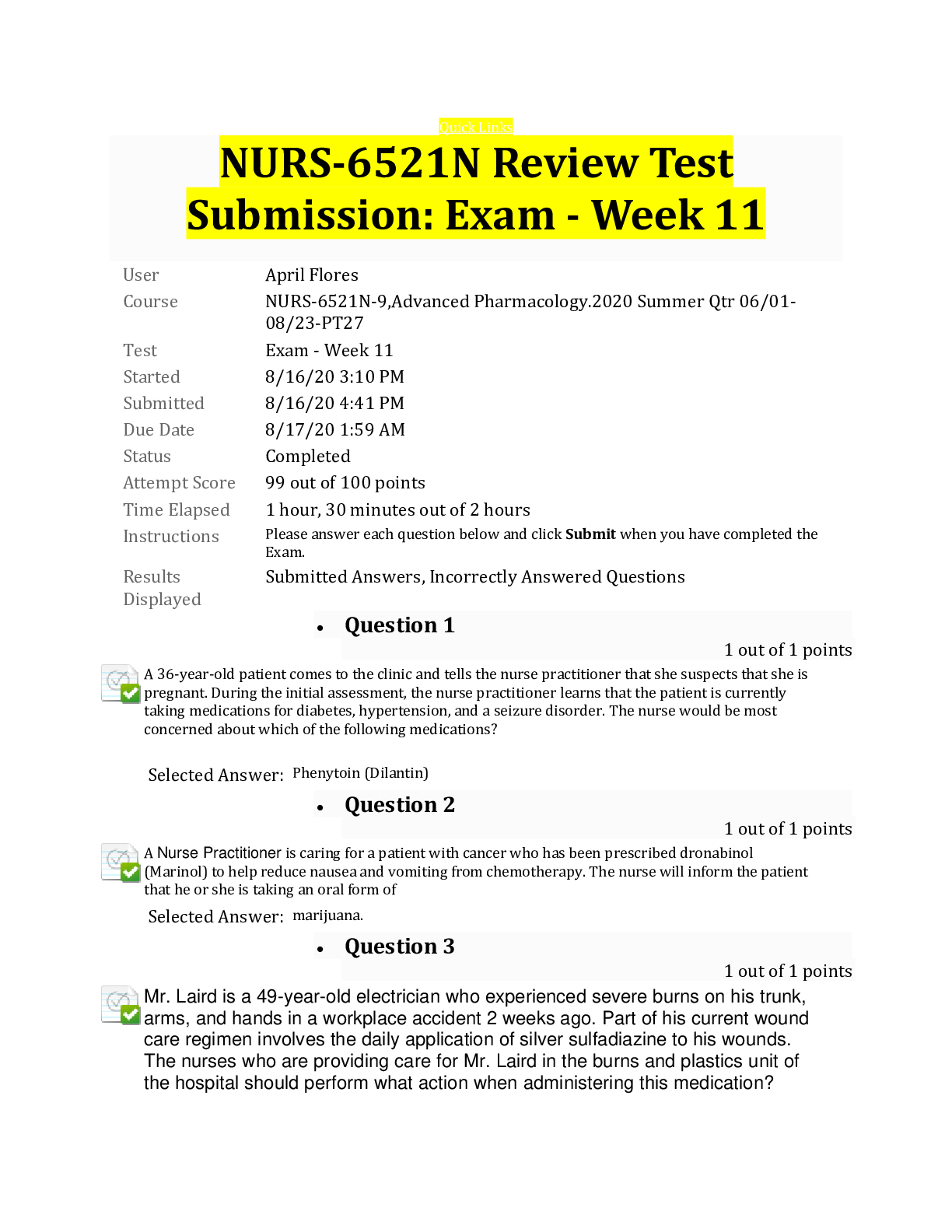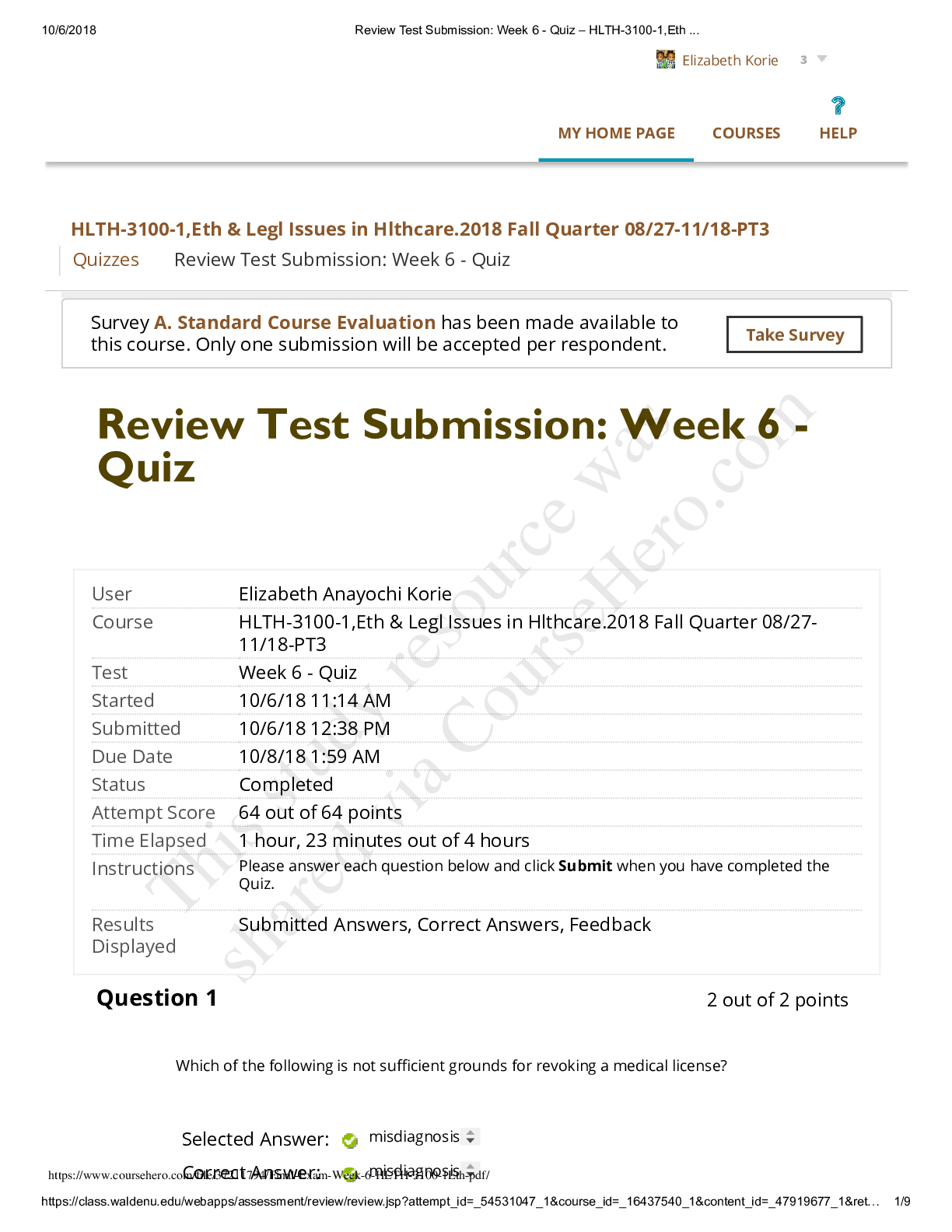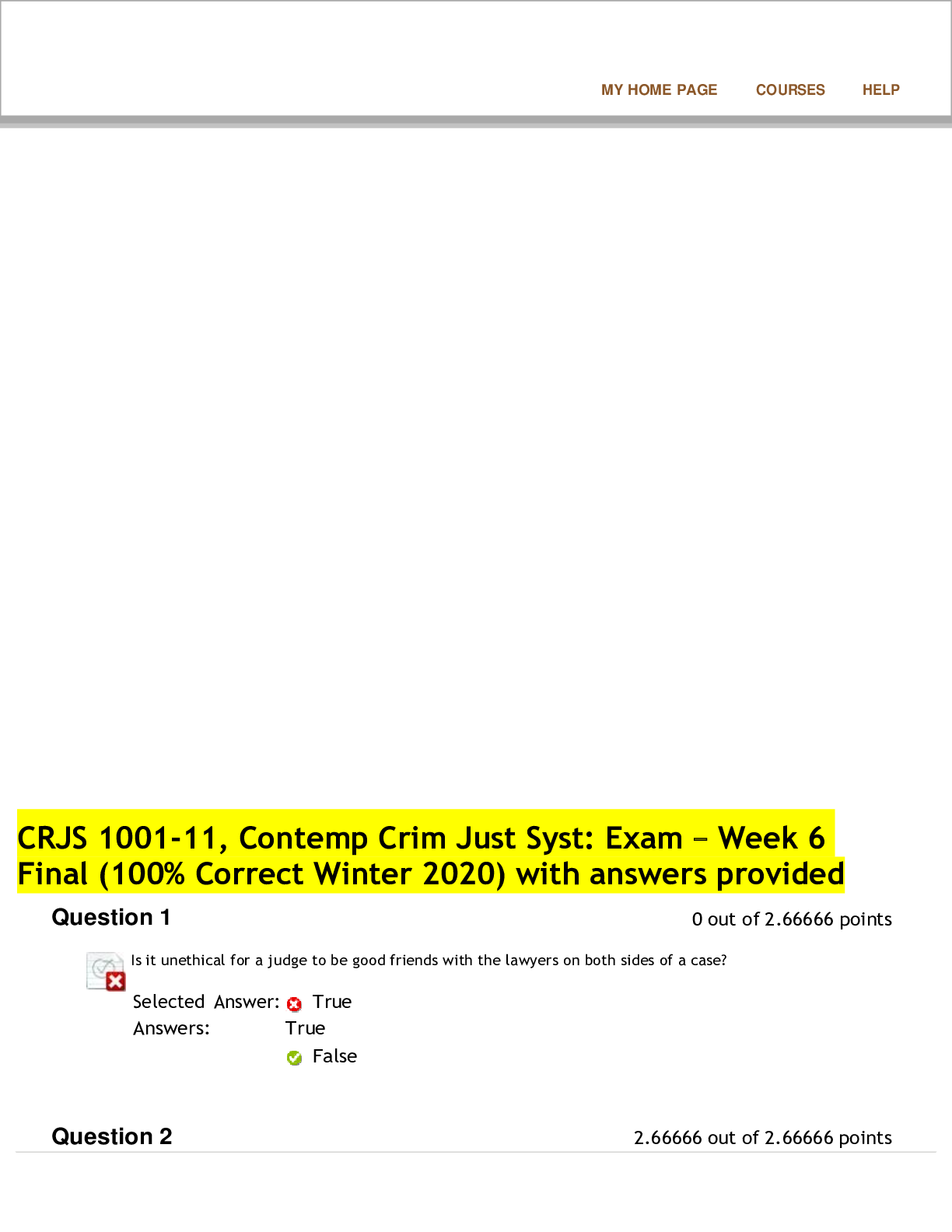NURS 6512N-29 Exam - Week 11
Document Content and Description Below
Exam - Week 11 • Question 1 1 out of 1 points Which portion of the physical examination is best done with the patient standing? • Question 2 1 out of 1 points To assess sp... inal levels L2, L3, and L4, which deep tendon reflex should be tested? • Question 3 1 out of 1 points Nerves that arise from the brain rather than the spinal cord are called: • Question 4 1 out of 1 points While interviewing a 70-year-old female clinic patient, she tells you that she takes ginkgo biloba and St. John's wort. You make a short note to check for results of the: • Question 5 1 out of 1 points The finger-to-nose test allows assessment of: • Question 6 1 out of 1 points The difference in blood pressure readings between the right and the left arms is considered normal up to _____ mm Hg. • Question 7 1 out of 1 points Functional assessment is most important during the examination of a(n): • Question 8 1 out of 1 points During a routine prenatal visit, Ms. T. was noted as having dependent edema, varicosities of the legs, and hemorrhoids. She expressed concern about these symptoms. You explain to Ms. T. that her enlarged uterus is compressing her pelvic veins and her inferior vena cava. You would further explain that these findings: • Question 9 1 out of 1 points Palpation of epitrochlear nodes is part of the: • Question 10 1 out of 1 points Which one of the following techniques is used to detect a torn meniscus? • Question 11 1 out of 1 points Cranial nerve XII may be assessed in an infant by: • Question 12 1 out of 1 points Loss of immediate and recent memory with retention of remote memory suggests: • Question 13 1 out of 1 points The family history for a patient with joint pain should include information about siblings with: • Question 14 1 out of 1 points When palpating joints, crepitus may occur when: • Question 15 1 out of 1 points A red, hot swollen joint in a 40-year-old man should lead you to suspect: • Question 16 1 out of 1 points Inquiry about nocturnal muscle spasms would be most significant when taking the musculoskeletal history of: • Question 17 1 out of 1 points You are conducting a preparticipation physical examination for a 10-year-old girl with Down syndrome who will be playing basketball. She has slight torticollis and mild ankle clonus. What additional diagnostic testing would be required for her? • Question 18 1 out of 1 points In the most effective percussion technique of the posterior lung fields, the patient cooperates by: • Question 19 1 out of 1 points A 12-year-old boy relates that his left scrotum has a soft swollen mass. The scrotum is not painful upon palpation. The left inguinal canal is without masses. The mass does transilluminate with a penlight. This collection of symptoms is consistent with: • Question 20 1 out of 1 points An apical PMI palpated beyond the left fifth intercostal space may indicate: • Question 21 1 out of 1 points The checkout station for preparticipation physical evaluation (PPE) is critical because at this point: • Question 22 1 out of 1 points If a patient cannot shrug the shoulders against resistance, which cranial nerve (CN) requires further evaluation? • Question 23 1 out of 1 points You are conducting a clinical breast examination for your 30-year-old patient. Her breasts are symmetrical with bilateral, multiple tender masses that are freely moveable with well-defined borders. You recognize that these symptoms and assessment findings are consistent with: • Question 24 1 out of 1 points The Mini-Mental State Examination should be administered for the patient who: • Question 25 1 out of 1 points The physical assessment technique most frequently used to assess joint symmetry is: • Question 26 1 out of 1 points The reliability of health-related findings and observations is the responsibility of the: • Question 27 1 out of 1 points You are examining Mr. S., a 79-year-old diabetic man complaining of claudication. Which of the following physical findings is consistent with the diagnosis of arterial occlusion? • Question 28 1 out of 1 points If pitting edema is unilateral, you would suspect occlusion of a: • Question 29 1 out of 1 points For purposes of examination and communication of physical findings, the breast is divided into: • Question 30 1 out of 1 points Your patient's chief complaint is repeated pencil-like stools. Further examination should include: • Question 31 1 out of 1 points Facial muscle or tongue weakness may result in: • Question 32 1 out of 1 points The musculoskeletal examination should begin when: • Question 33 1 out of 1 points You are initially evaluating the equilibrium of Ms. Q. You ask her to stand with her feet together and arms at her sides. She loses her balance. Ms. Q. has a positive: • Question 34 1 out of 1 points The best way to ease the apprehension of a 3-year-old child before a physical examination is to: • Question 35 1 out of 1 points Examination of the patient in the lithotomy, or knee-chest, position includes: • Question 36 1 out of 1 points Breath sounds normally heard over the trachea are called: • Question 37 1 out of 1 points You are interviewing a 20-year-old patient with a new-onset psychotic disorder. The patient is apathetic and has disturbed thoughts and language patterns. The nurse recognizes this behavior pattern as consistent with a diagnosis of: • Question 38 1 out of 1 points While collecting personal and social history data from a woman complaining of breast discomfort, you should question her regarding: • Question 39 1 out of 1 points When conducting a geriatric assessment, basic activities of daily living (ADLs) include: • Question 40 1 out of 1 points Which cranial nerves are usually evaluated during the examination of the eyes? • Question 41 1 out of 1 points A patient you are seeing in the emergency department for chest pain is suspected of having a myocardial infarction. During the health history interview of his family history, he relates that his father had died of "heart trouble." The most important follow-up question you should pose is which of the following? • Question 42 1 out of 1 points The spread of the impulse through the ventricles (ventricular depolarization) is depicted on the ECG as the: • Question 43 1 out of 1 points The rectal past medical history of all patients should include inquiry about: • Question 44 1 out of 1 points Recent unilateral inversion of a previously everted nipple suggests: • Question 45 1 out of 1 points Tarry black stool should make you suspect: • Question 46 1 out of 1 points Nancy Walker is a 16-year-old girl who presents to the clinic with complaints of severe, acute chest pain. Her mother reports that Nancy, apart from occasional colds, Nancy is not prone to respiratory problems. What potential risk factor is most important to assess with regards to Nancy's current problem? • Question 47 1 out of 1 points You are performing a two-point discrimination test as part of a well physical examination. The area with the ability to discern two points in the shortest distance is the: • Question 48 1 out of 1 points An ophthalmoscopic eye examination involves: • Question 49 1 out of 1 points An idiopathic spasm of arterioles in the digits is termed: • Question 50 1 out of 1 points The Mini-Mental State Examination: • Question 51 1 out of 1 points When assessing a 17-year-old for nuchal rigidity, you gently raise his head off the examination table. He involuntarily flexes his hips and knees. To confirm your suspicions associated with this positive test, you would also perform a test for the _____ sign. • Question 52 1 out of 1 points Which condition is considered progressive rather than reversible? • Question 53 1 out of 1 points When you attempt to move a 10-month-old child from his mother's lap to the examination table, he screams loudly. Your best action is to: • Question 54 1 out of 1 points An examiner has rotated a brush several times into the cervical os. The brush was withdrawn and stroked lightly on a glass slide. The slide was sprayed with fixative. Which type of specimen requires this technique for collection? • Question 55 1 out of 1 points Inspection of the scrotum should reveal: • Question 56 1 out of 1 points A parent is advised to restrict contact or collision sports participation for their child. An example of a sport in which this child could participate is: • Question 57 1 out of 1 points Bimanual examination of the uterus includes: • Question 58 1 out of 1 points Temporalis and masseter muscles are evaluated by: • Question 59 1 out of 1 points When the Goodenough-Harris Drawing Test is administered to a child, the evaluator principally observes the: • Question 60 1 out of 1 points A cervical polyp usually appears as a: • Question 61 1 out of 1 points You are inspecting the genitalia of an uncircumcised adult male. The foreskin is tight and cannot be easily retracted. You should: • Question 62 1 out of 1 points At your first meeting with a patient, it is usually best to say: • Question 63 1 out of 1 points Normal changes of the aging brain include: • Question 64 1 out of 1 points A 23-year-old white woman has come to the clinic because she has missed two menstrual periods. She states that her breasts have enlarged and that her nipples have turned a darker color. Your further response to this finding is to: • Question 65 1 out of 1 points Your 15-year-old patient is athletic and thin. Radiography of an ankle injury reveals a stress fracture. You should question this patient about her: • Question 66 1 out of 1 points Palpation of a normal prostate in an older adult is likely to feel: • Question 67 1 out of 1 points It is especially important to test for ankle clonus if: • Question 68 1 out of 1 points Diabetic peripheral neuropathy will likely produce: • Question 69 1 out of 1 points A pulsation that is diminished to the point of being barely palpable would be graded as: • Question 70 1 out of 1 points A common finding in markedly obese and pregnant women is: • Question 71 1 out of 1 points One of the most important aspects to consider in the orthopedic screening examination is: • Question 72 1 out of 1 points Kawasaki disease is suspected when assessments of a child reveal: • Question 73 1 out of 1 points Throughout the history and physical examination, the clinician should: • Question 74 1 out of 1 points You are assessing Mr. Z.'s fluid volume status as a result of heart failure. If your finger depresses a patient's edematous ankle to a depth of 6 mm, you should record this pitting as: • Question 75 1 out of 1 points A grade IV mitral regurgitation murmur would: • Question 76 1 out of 1 points While examining a 30-year-old woman, you note that one breast is slightly larger than the other. In response to this finding, you should: • Question 77 1 out of 1 points Part of the screening orthopedic component of the examination includes evaluating the person while he or she is: • Question 78 1 out of 1 points A positive straight leg raise test usually indicates: • Question 79 1 out of 1 points Assessing orientation to person, place, and time helps determine: • Question 80 1 out of 1 points During chest assessment, you note the patient's voice quality while auscultating the lung fields. The voice sound is intensified, there is a nasal quality to the voice, and the e's sound like a s. This sound is indicative of: • Question 81 1 out of 1 points As Mr. B. enters the room, you observe that his gait is wide based and he staggers from side to side while swaying his trunk. You would document Mr. B.'s pattern as: • Question 82 1 out of 1 points Which one of the following is a proper technique for use of a speculum during a vaginal examination? • Question 83 1 out of 1 points A patient in the deepest coma would be scored a _____ on the Glasgow Coma Scale. • Question 84 1 out of 1 points Electrical activity recorded by the electrocardiogram (ECG) tracing that denotes the spread of the stimulus through the atria is the: • Question 85 1 out of 1 points Anterior cruciate ligament integrity is assessed via the _____ test. • Question 86 1 out of 1 points You are examining a patient in the emergency department who has recently sustained head trauma. In order to initially assess this patient's neurologic status, you would: • Question 87 1 out of 1 points Which medical condition would exclude a person from sports participation? • Question 88 1 out of 1 points You are conducting an examination of Mr. Curtis's heart and blood vessels and auscultate a grade III murmur. The intensity of this murmur is: • Question 89 1 out of 1 points When assessing superficial pain, touch, vibration, and position perceptions, you are testing: • Question 90 1 out of 1 points Ulnar deviation and boutonniere deformities are characteristic of: • Question 91 1 out of 1 points Montgomery tubercles are most prominent in the breasts of: • Question 92 1 out of 1 points To assess a cremasteric reflex, the examiner strokes the: • Question 93 1 out of 1 points Postural hypotension is defined as a _____ when the patient stands, compared with sitting or supine readings. • Question 94 1 out of 1 points If your patient has nipple discharge, you will most likely need a: • Question 95 1 out of 1 points The strength of the trapezius muscle is evaluated by having the patient: • Question 96 1 out of 1 points Breath odors may clue the examiner to certain underlying metabolic conditions. The odor of ammonia on the breath may signify: • Question 97 1 out of 1 points When is the mental status portion of the neurologic system examination performed? • Question 98 1 out of 1 points When palpating breast tissue, the examiner should use the _____ at each site. • Question 99 1 out of 1 points Your older clinic patient is being seen today as a follow-up for a 2-day history of pneumonia. The patient continues to have a productive cough, shortness of breath, and lethargy and has been spending most of the day lying in bed. You should begin the chest examination by: • Question 100 1 out of 1 points The examiner percusses for diaphragmatic excursion along the: • Question 101 0 out of 0 points When completing this exam, did you comply with Walden University's Code of Conduct including the expectations for academic integrity? [Show More]
Last updated: 2 years ago
Preview 1 out of 16 pages

Buy this document to get the full access instantly
Instant Download Access after purchase
Buy NowInstant download
We Accept:

Reviews( 0 )
$10.50
Can't find what you want? Try our AI powered Search
Document information
Connected school, study & course
About the document
Uploaded On
Nov 14, 2020
Number of pages
16
Written in
Additional information
This document has been written for:
Uploaded
Nov 14, 2020
Downloads
0
Views
126

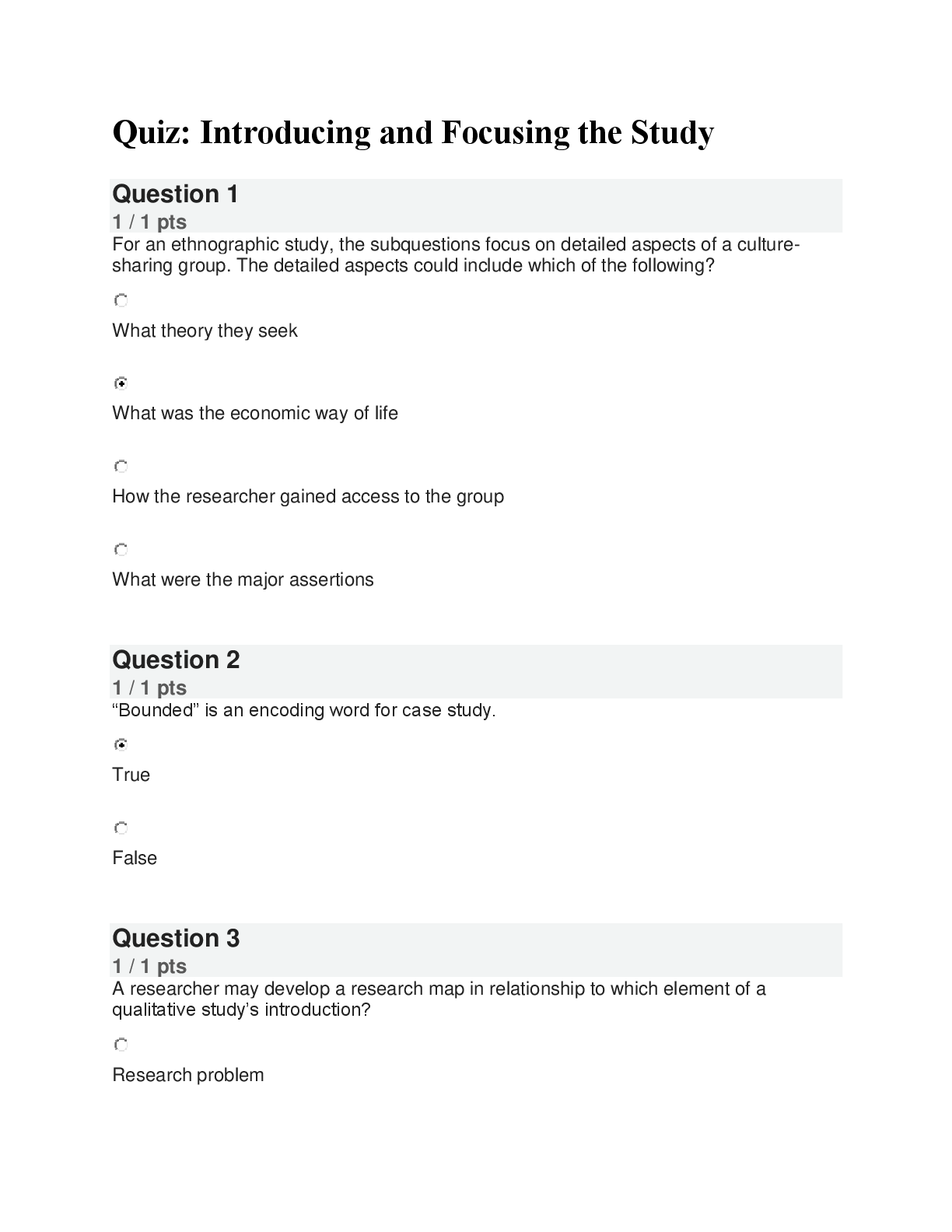
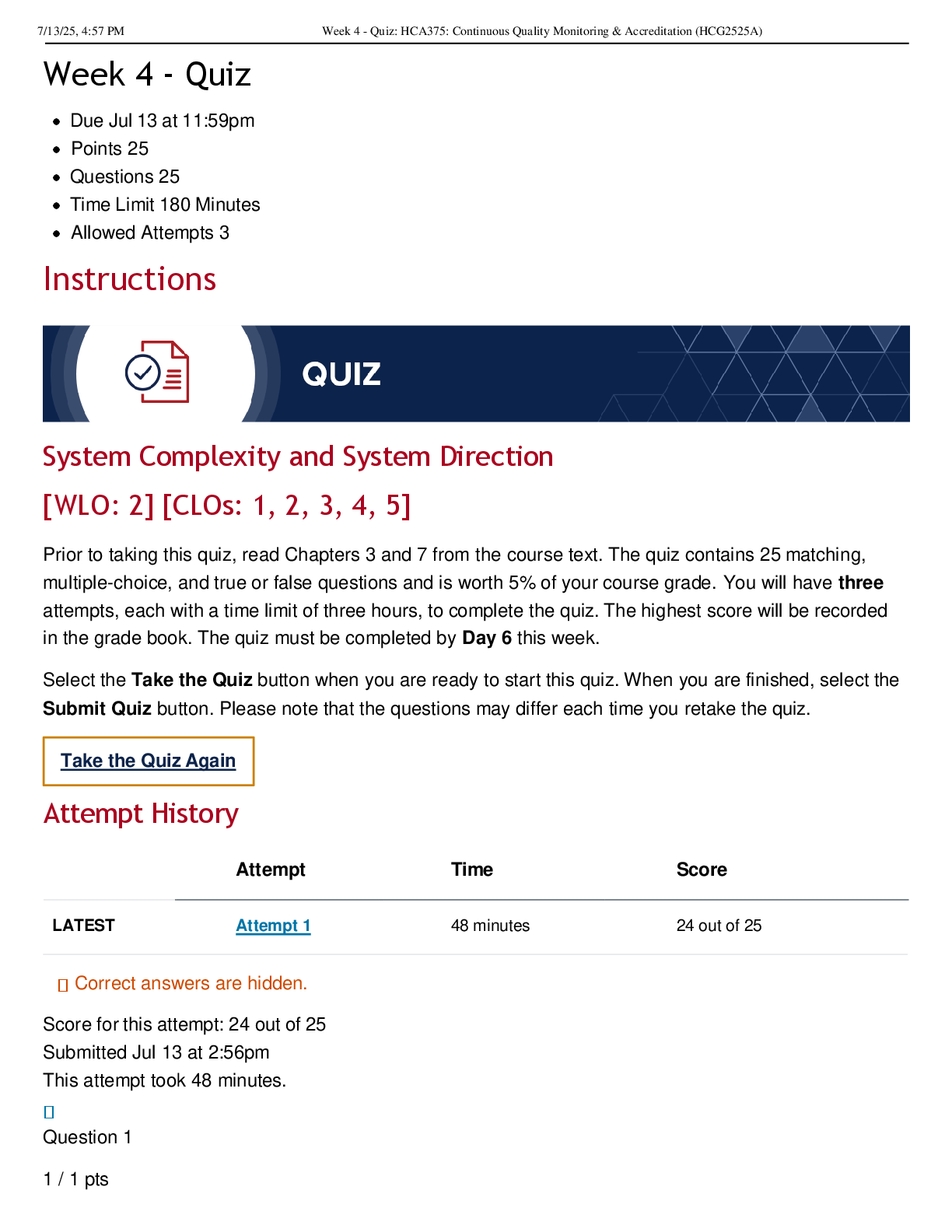
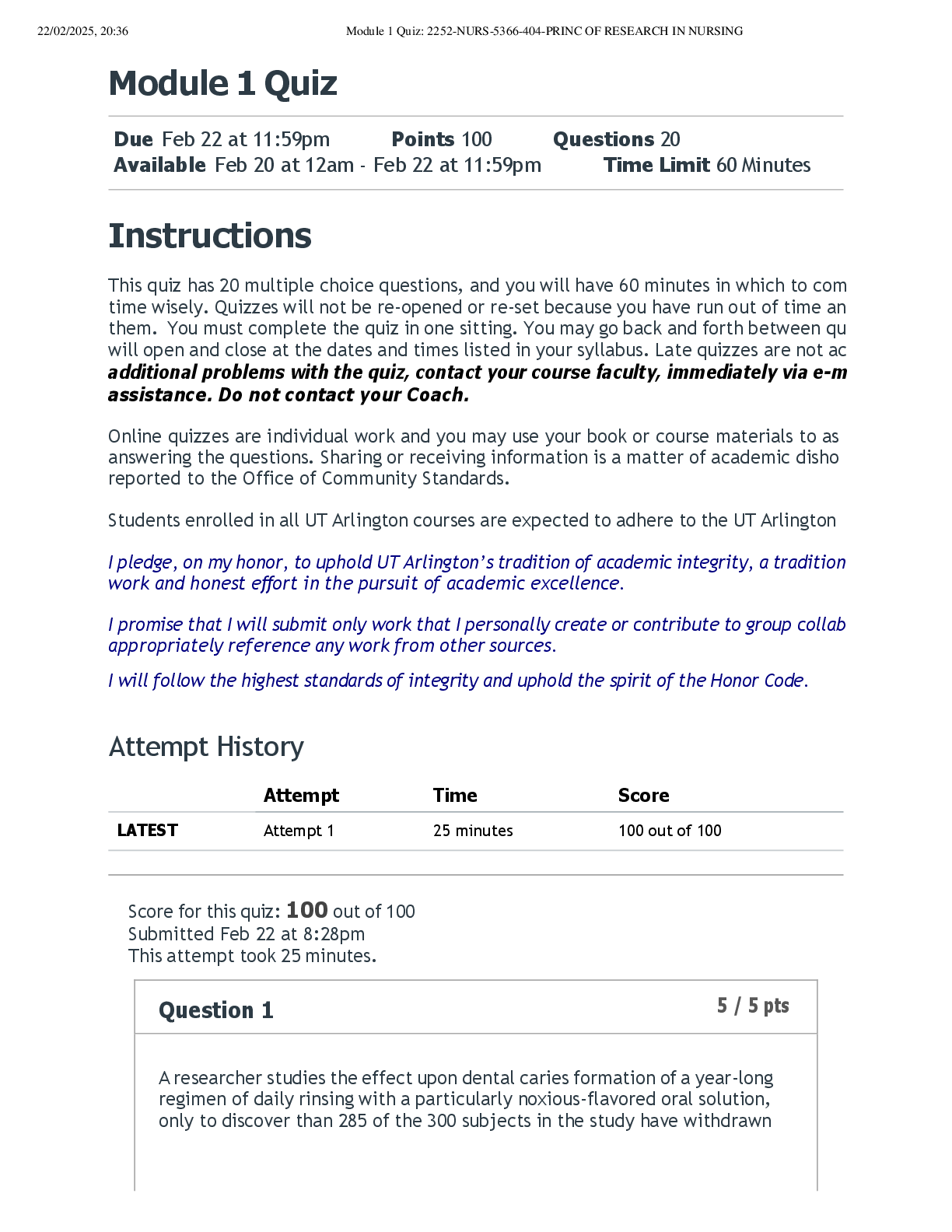
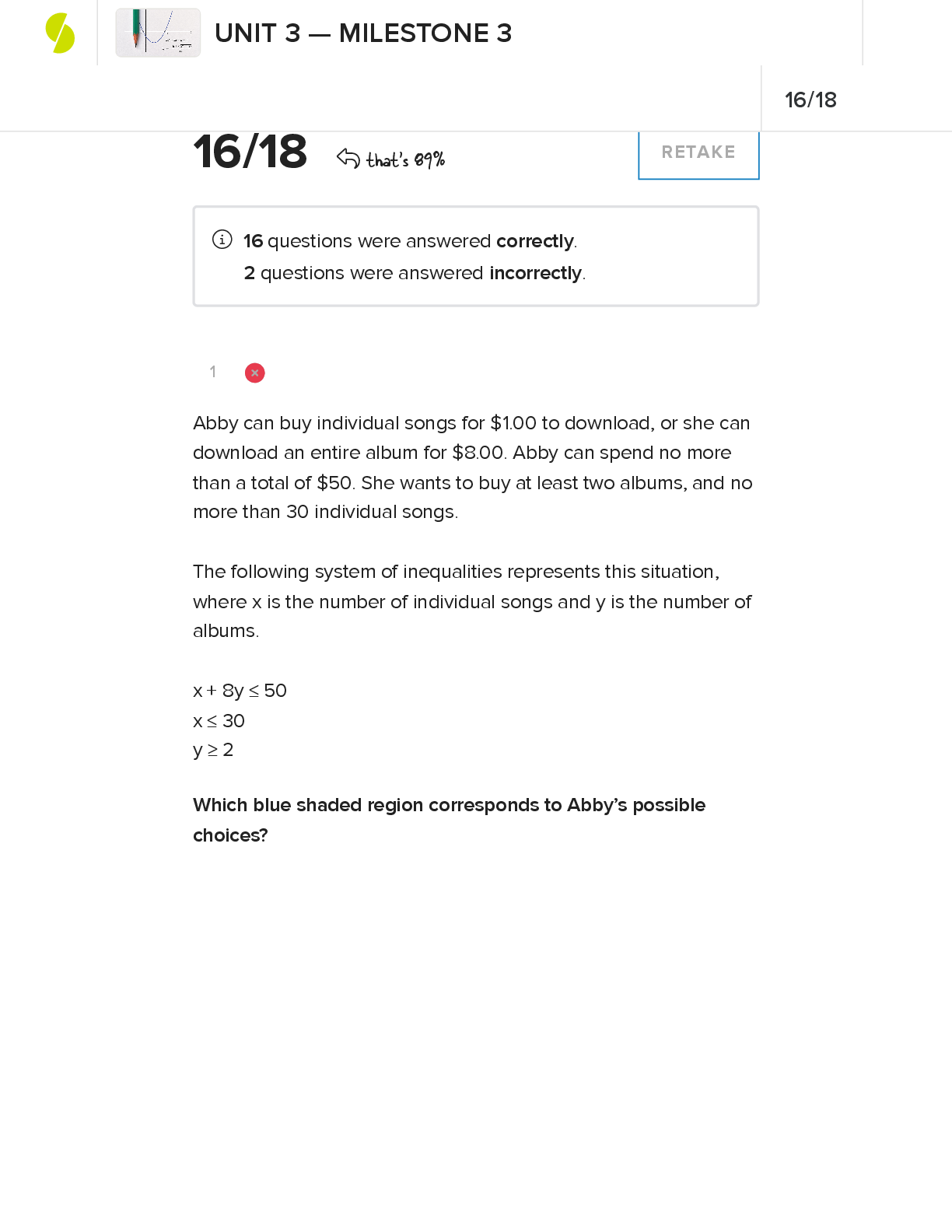
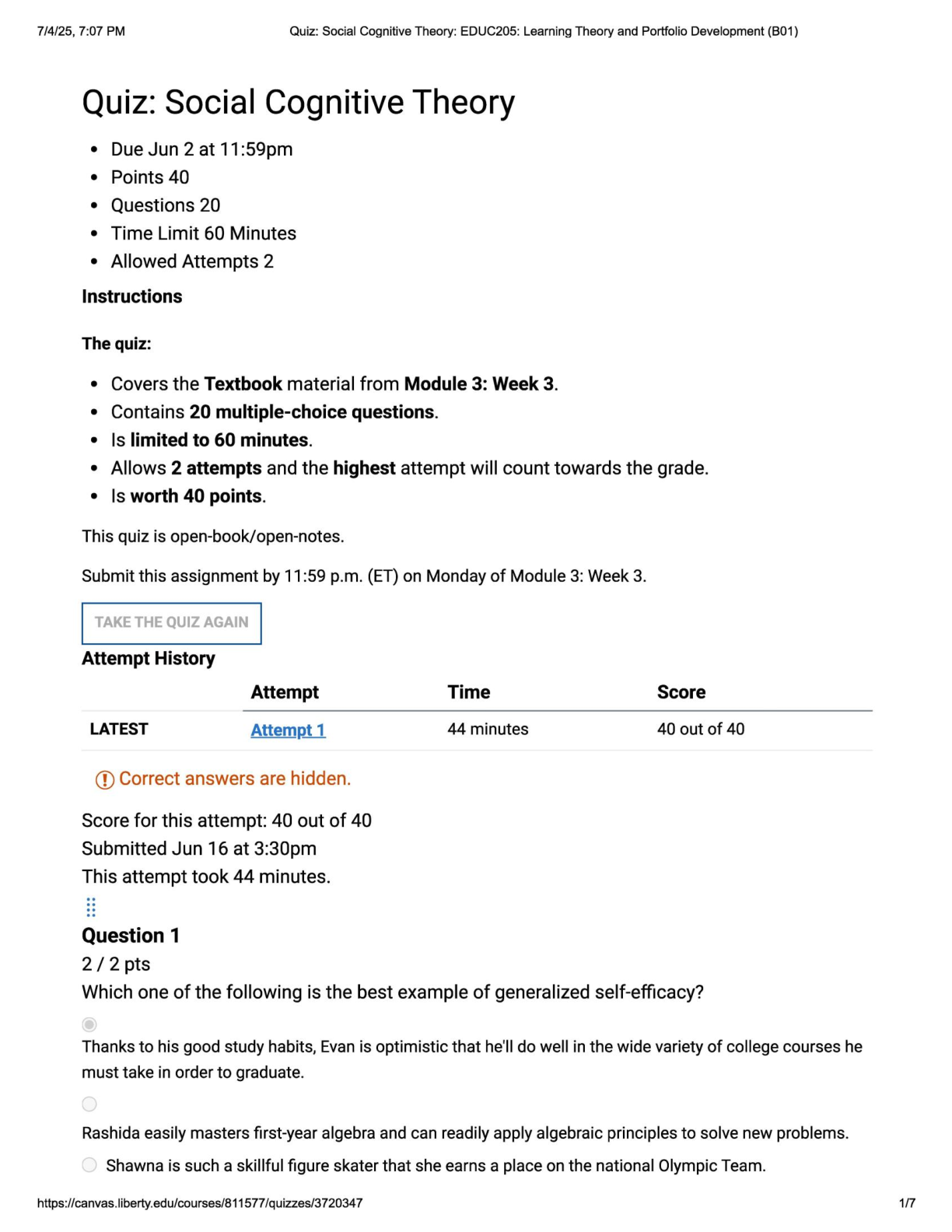
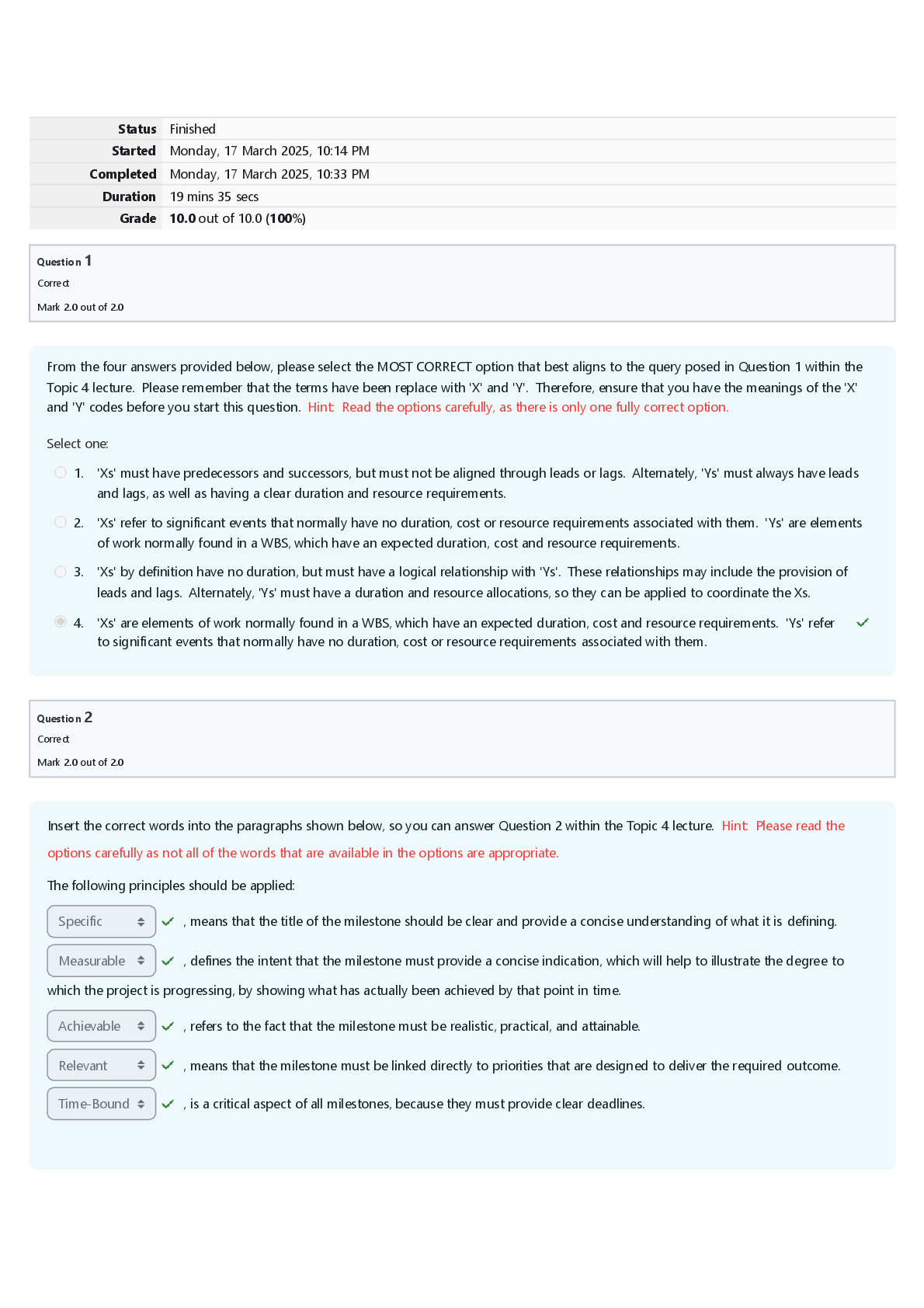
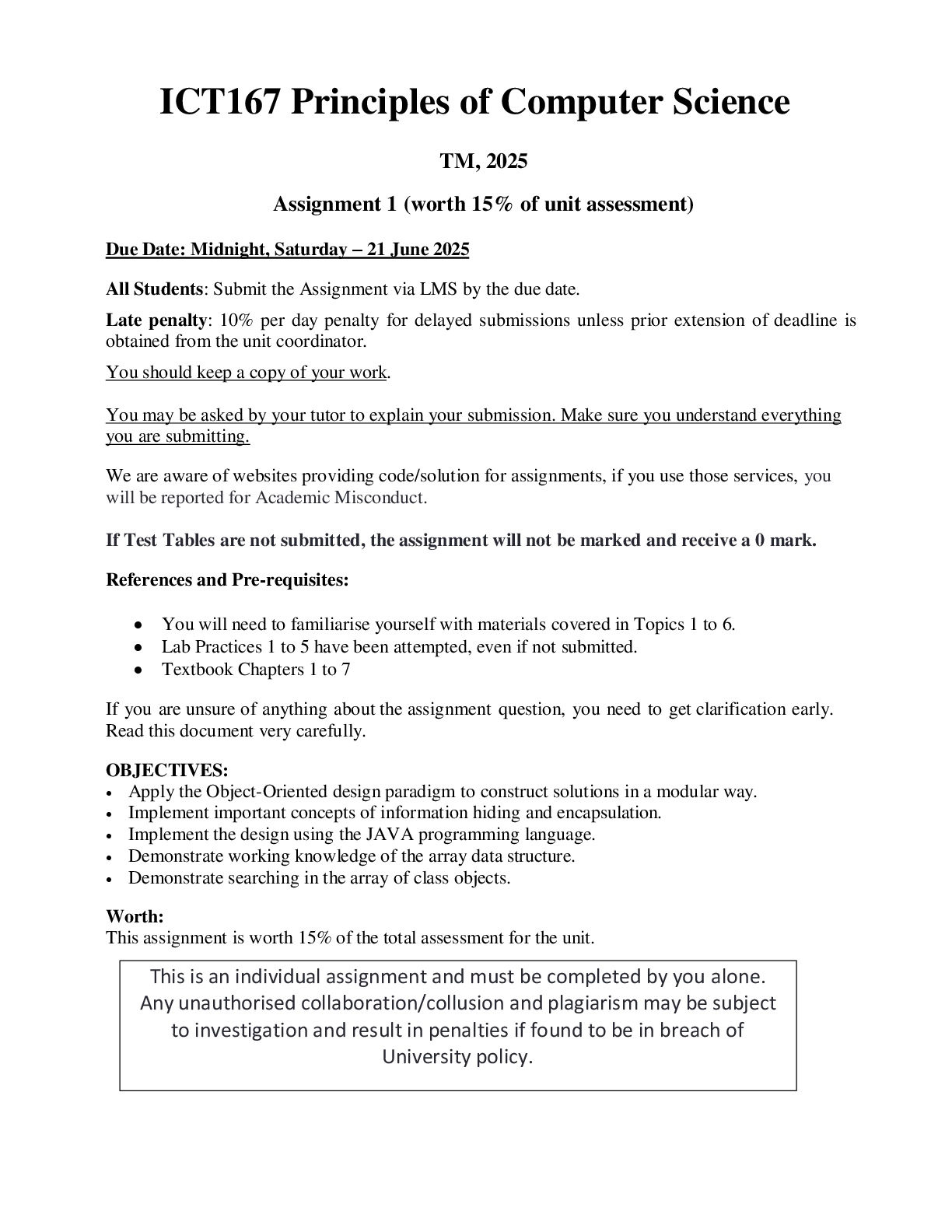
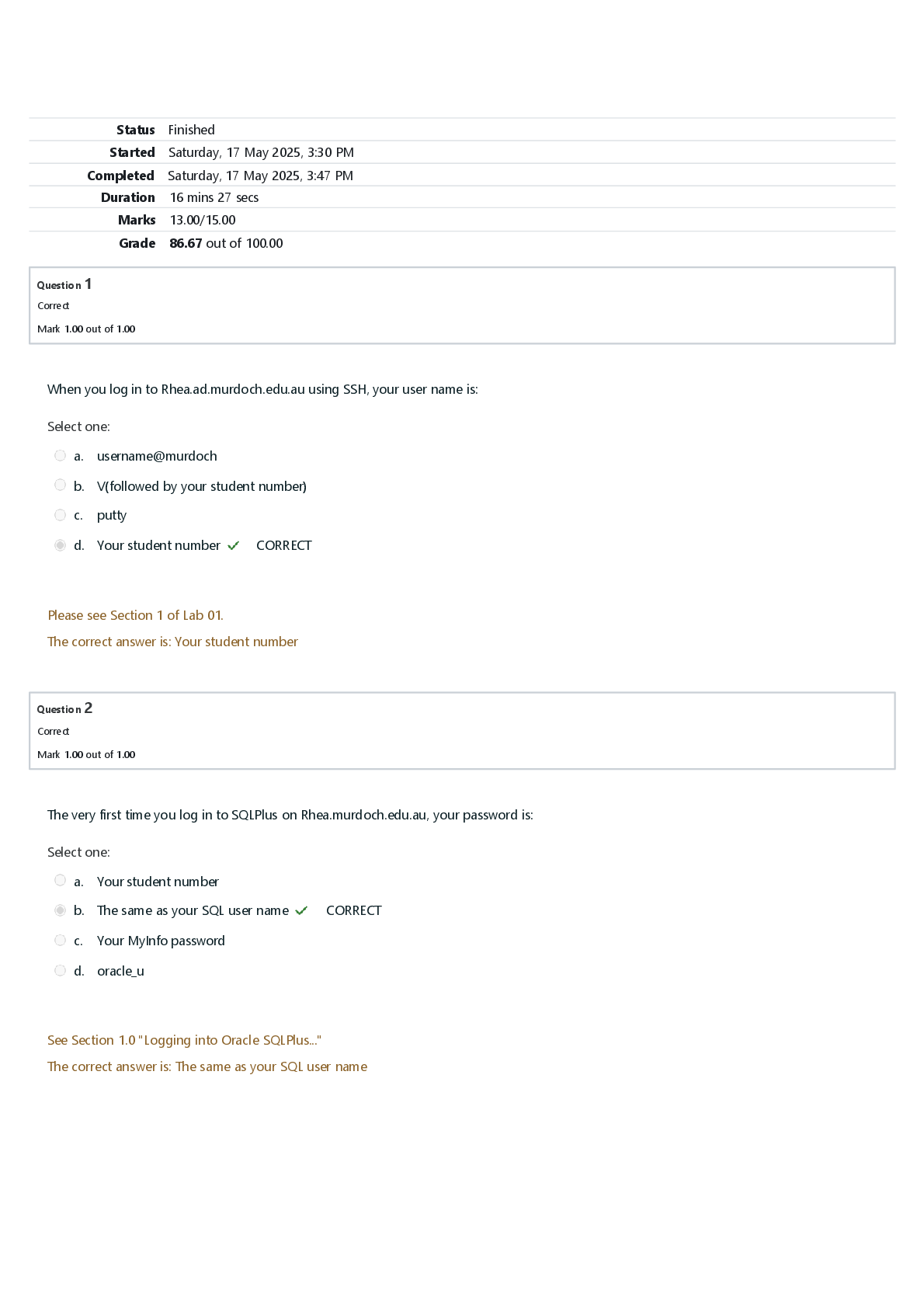
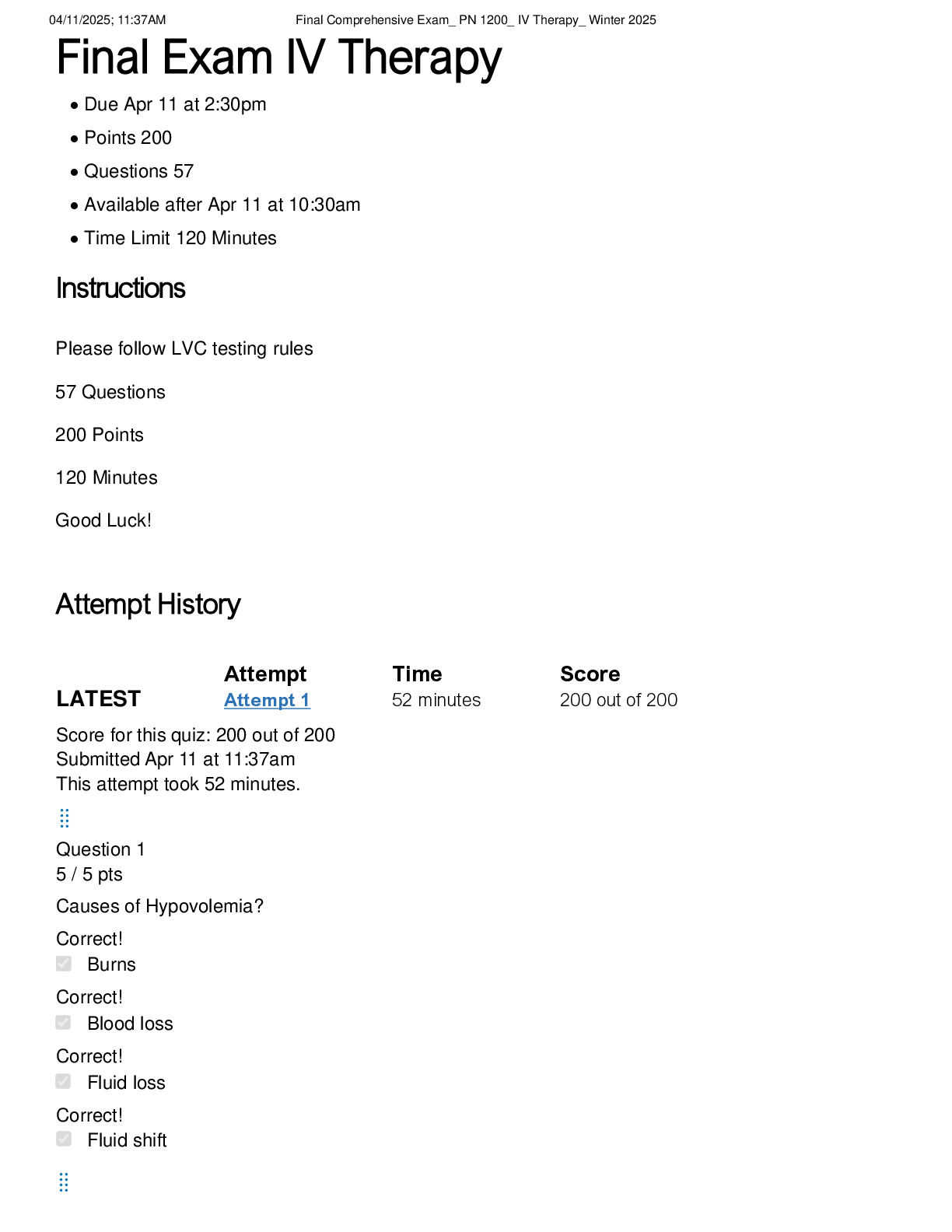
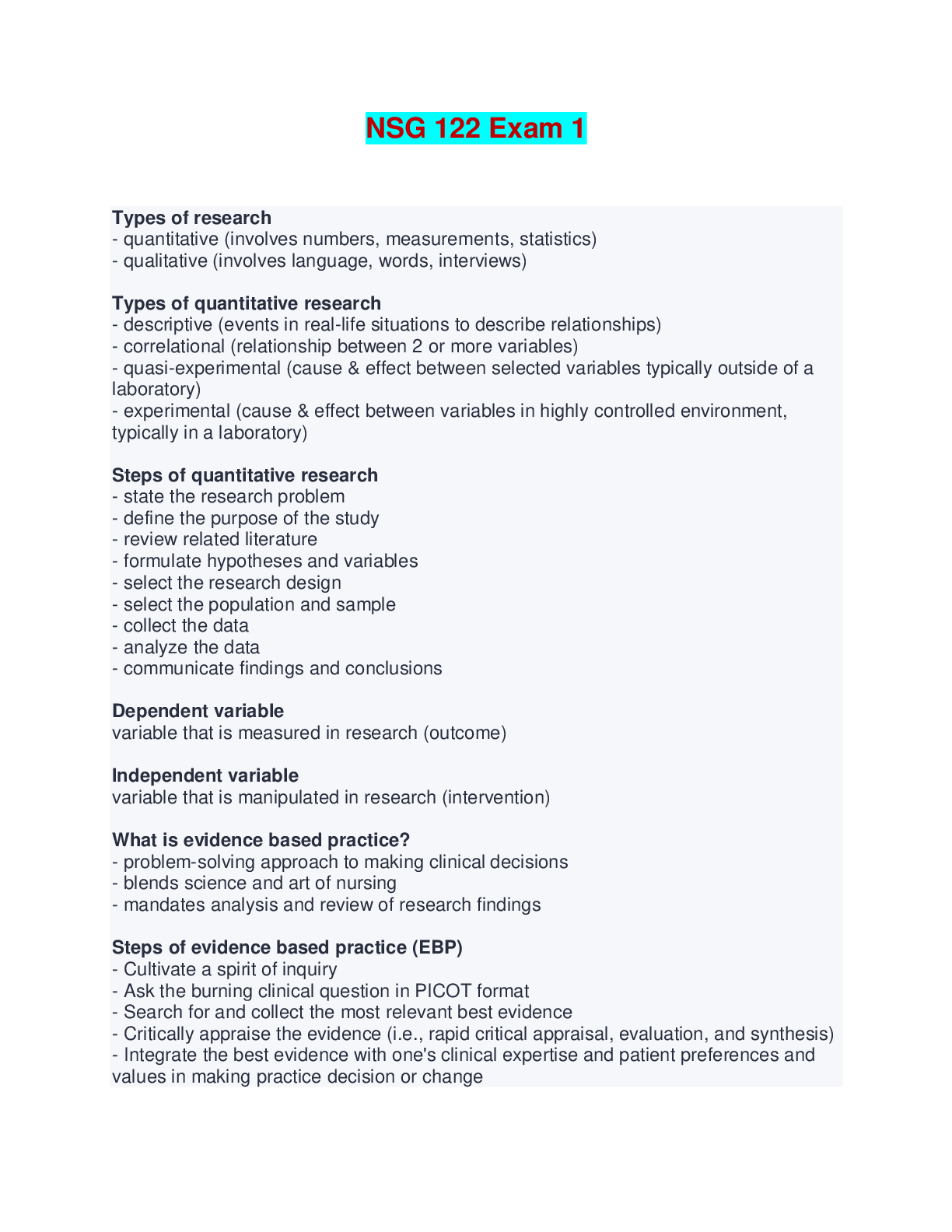
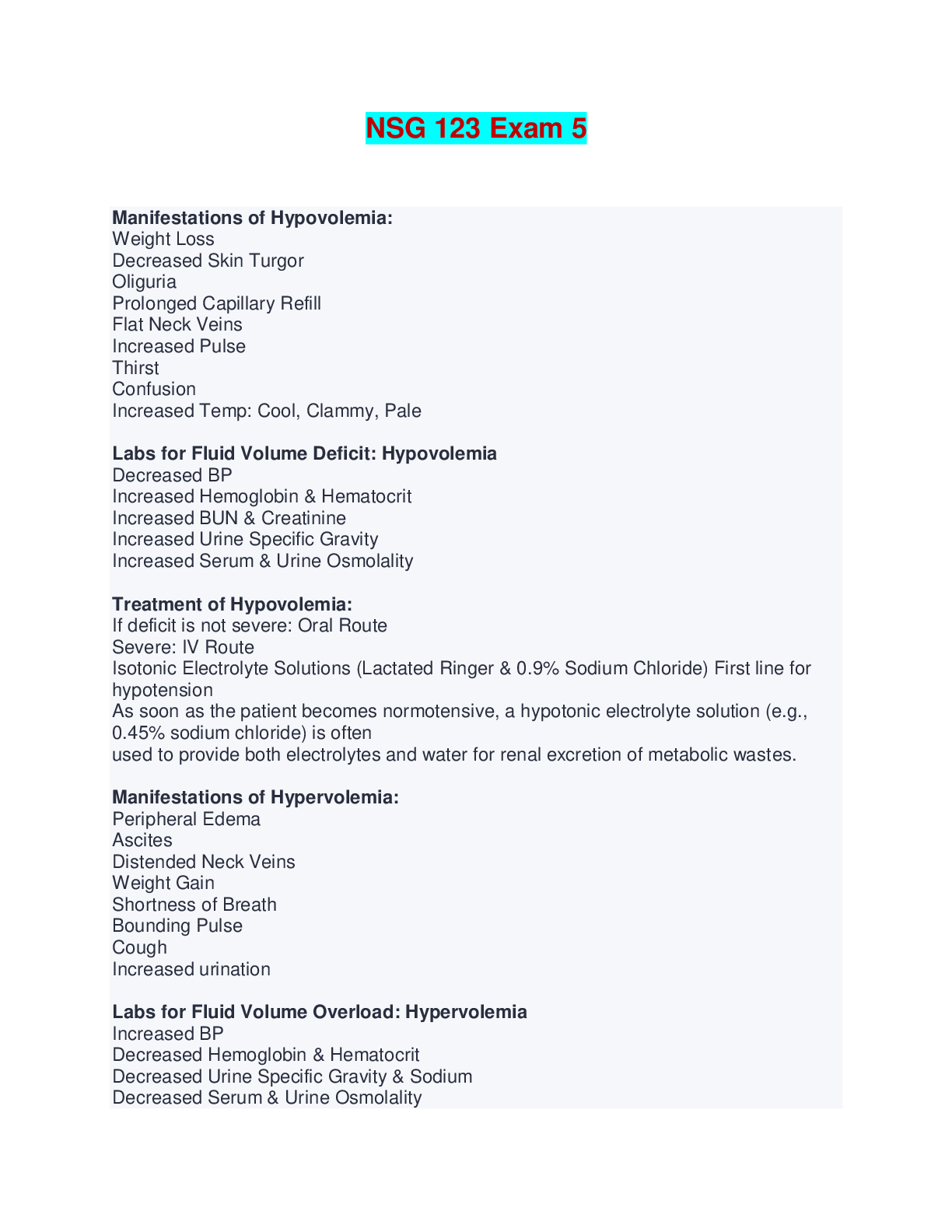
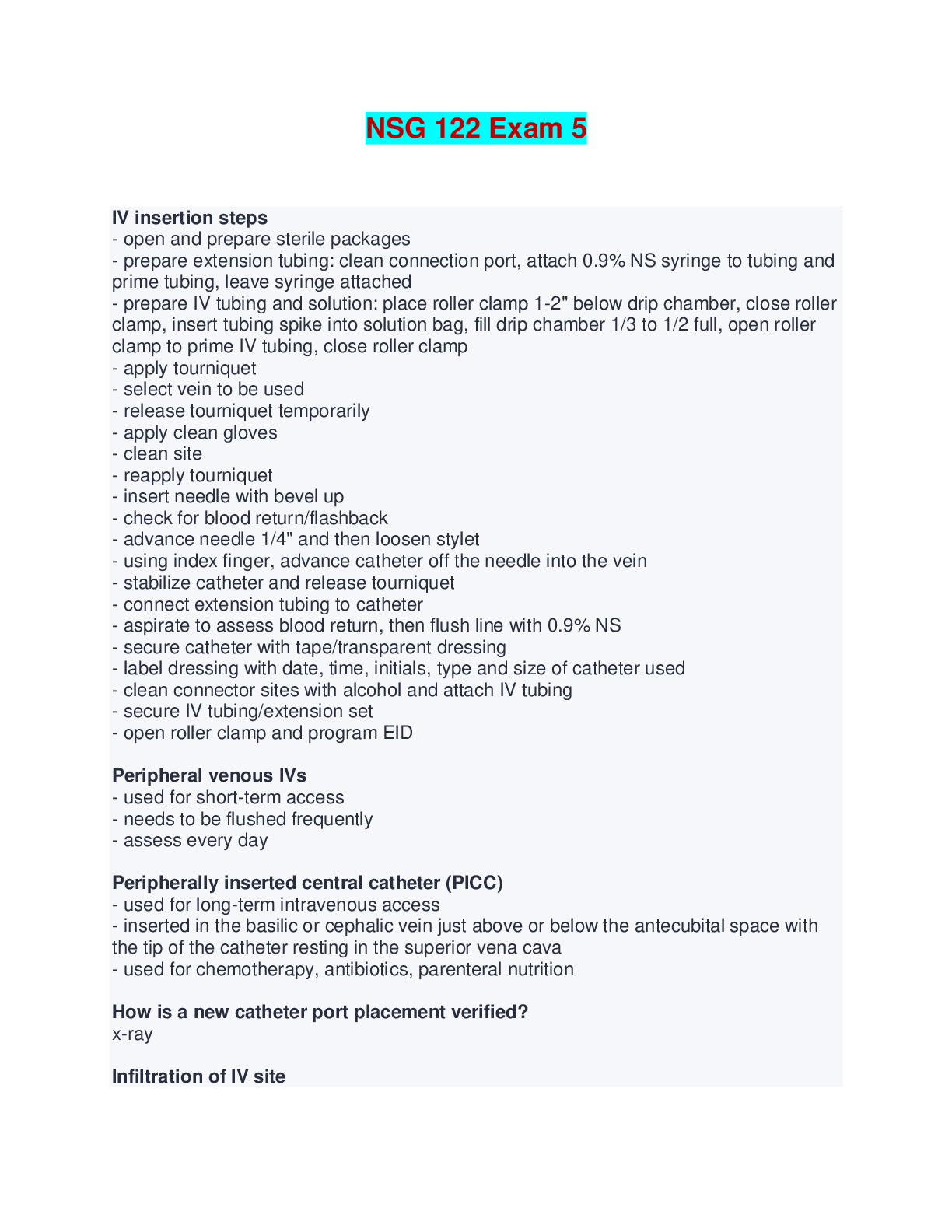
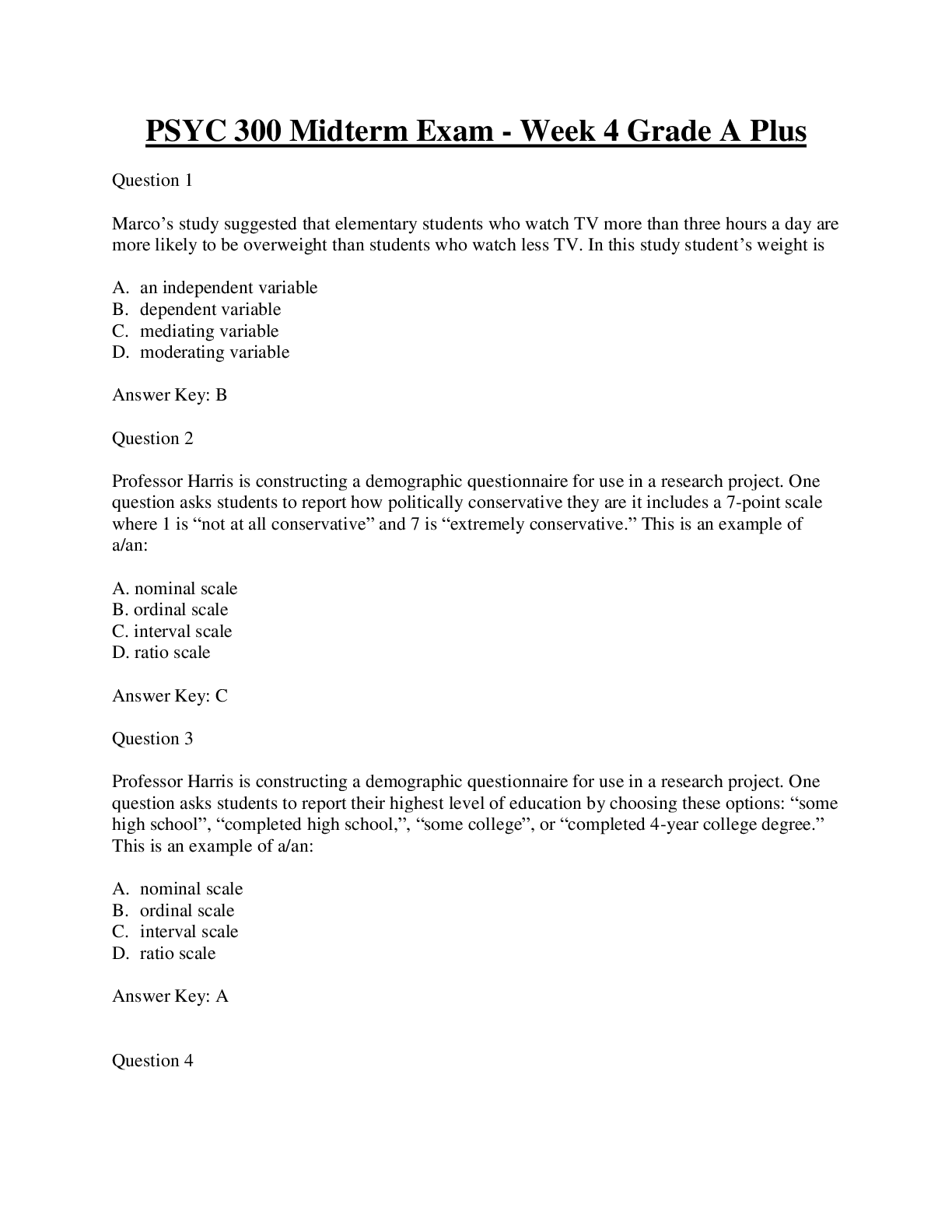
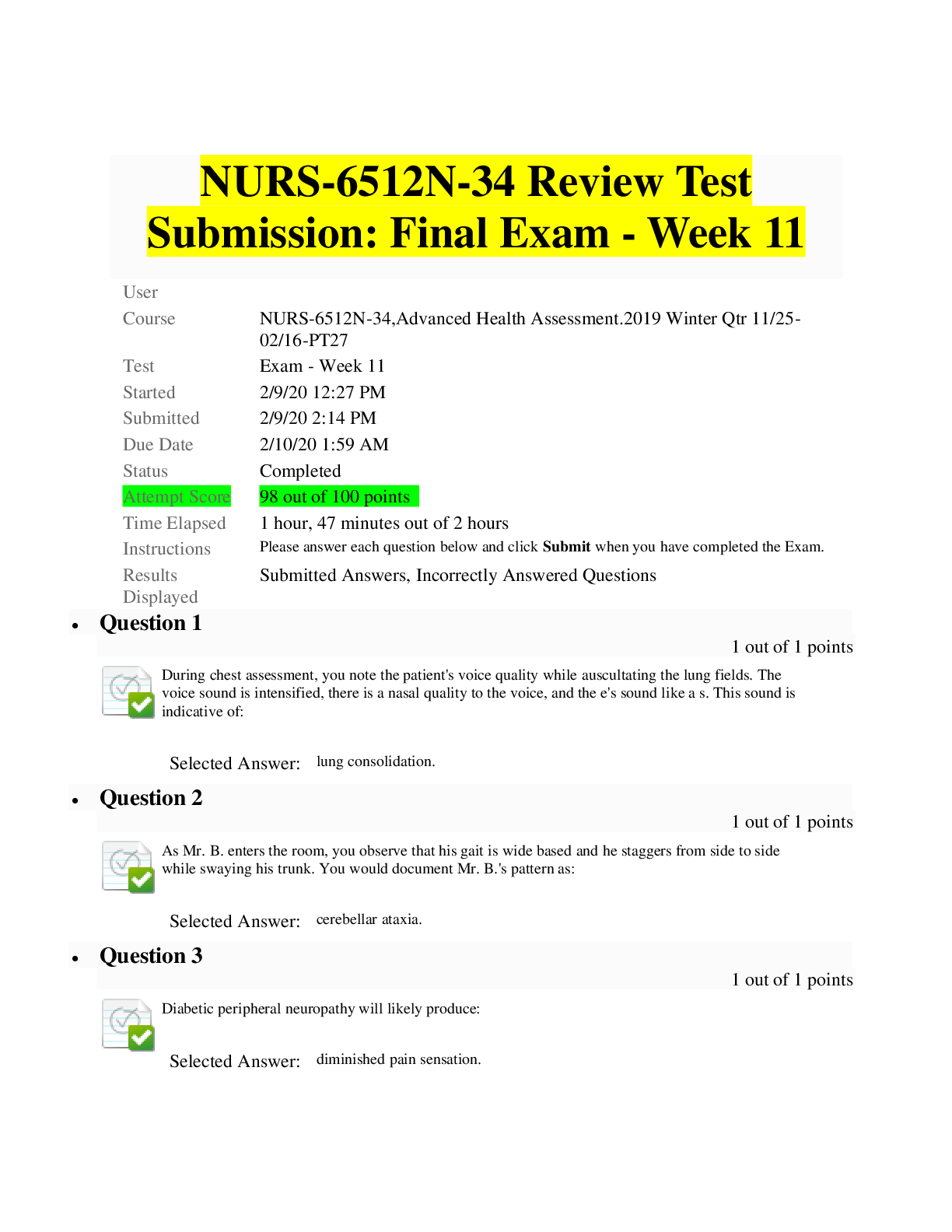
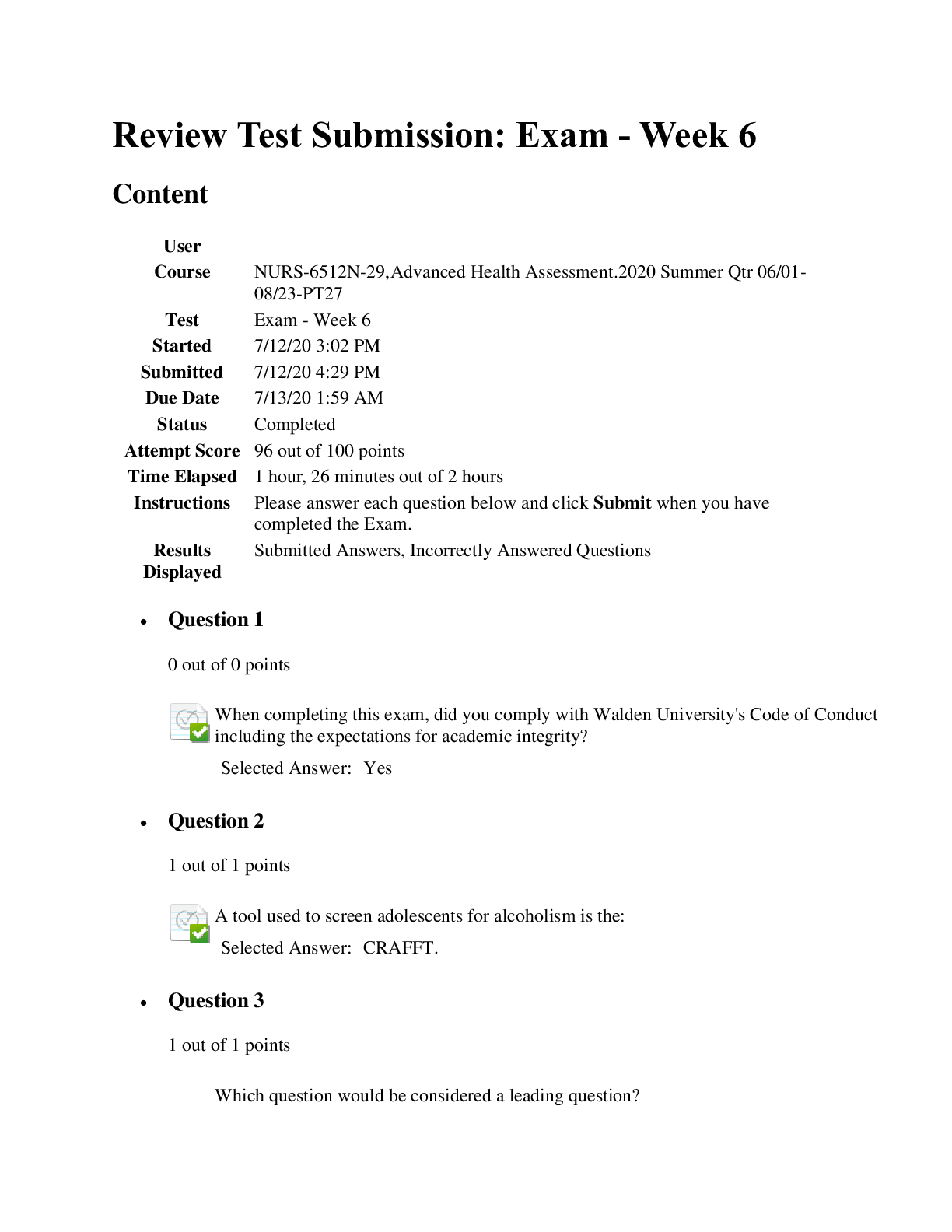
.png)
